Our Story
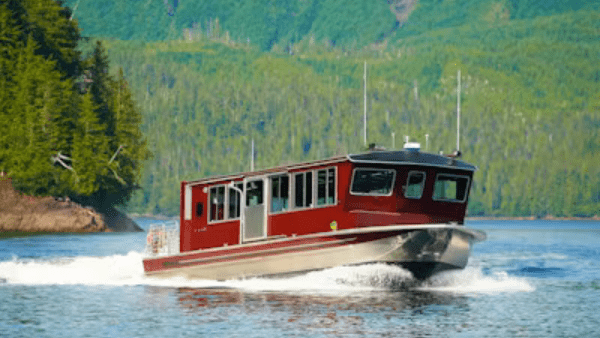
George Inlet Lodge
George Inlet Lodge rests on the shores of the spectacular George Inlet waterway! This picturesque lodge is accessible by road 15 miles south of Ketchikan.
As a former cannery bunkhouse, it was built in the 1940s and primarily housed the upper echelon of commercial fishing employees–ship captains, managers, and owners. After the cannery’s closing in 1970, two local businessmen, in an epic undertaking, had the lodge jacked up from its foundation and lowered onto a log raft. Towed for over 90 miles, the log raft crossed the waters of the Inside Passage from Hidden Inlet, located in the Portland Canal.
Miraculously, the 40 x 70 foot, hundred-ton, three-story structure survived the relocation. Since the pivotal year of 1974, the lodge initially operated as a sport fishing retreat. The rustic yet elegant atmosphere of the George Inlet Lodge will surely provide you with a memorable experience on your visit to Alaska.
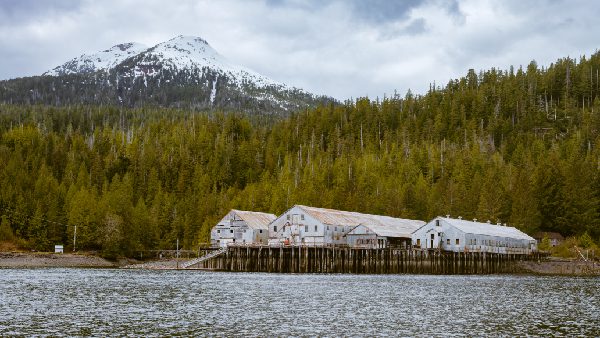
George Inlet Packing Cannery
Seafood is one of the most valuable resources in the state of Alaska. Salmon fishing was the beginning of Ketchikan in 1887. After the fishing season, most inhabitants would leave and return in the next season.
The canning technique made the abundant Alaskan salmon available to the nation and the world since the fresh catch could not be taken directly to the market from such an isolated place. Opening in 1914, the George Inlet Cannery packed fish until 1927. In 1934 the main cannery was rebuilt with a diesel engine, but the cannery was closed during World War II.
After the war, it reopened and operated until 1958. Fishing remained the economy’s mainstay, and this cannery was one of seven that combined to produce almost two million cases of salmon each year. The cannery reopened in 1996 as a historic landmark and is still used as a warehouse for fisherman’s gear and net storage.
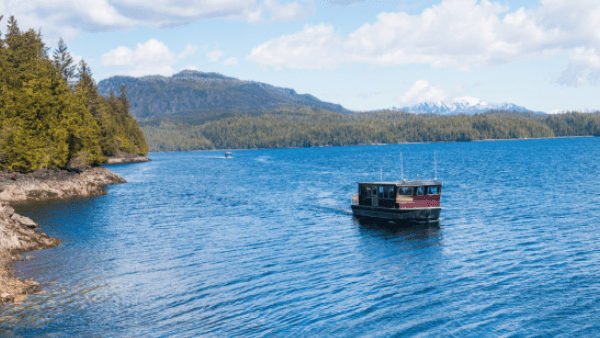
The Old Mahoney Mine
Gold Fever brought the first miners to Ketchikan, hoping to ” strike it rich” in a less crowded terrain. Although some gold was discovered, most mines produced less profitable finds—minerals. In 1904, a Norwegian immigrant, Joe Mahoney, prospected for gold near George Inlet’s shores. He discovered lead and zinc deposits and became the first to manufacture zinc concentrates commercially in Alaska. In 1942, the property was staked, and mined till 1949. In 1970, Lloyd Martin and William Basey started mining a lead-silver-zinc vein possibly on this property.
Because the production of the mine is unknown, the question lingers: was one cent of profit turned for all their labored efforts? The mine has since closed, leaving a visible, short, old mine shaft with its overhead stoop and rusty sawmill.

Mahoney Bight & Waterfall
Mahoney Falls is just one of the incredible stops on your Wilderness Exploration & Crab Feast Tour. The impressive falls offer excellent photo opportunities of the “breathtaking” Alaskan wilderness. Mahoney Bight is a natural salmon run and, beginning in June and continuing throughout the summer, you can witness thousands of salmon as they run in and out of the bight with the tide. In 1954, when the salmon runs were shallow, the United States Forest & Wildlife Service equipped 45 enforcement officers to patrol a twelve-mile stretch of water as stream guards to prevent illegal fishing. This action proved instrumental to the huge returns of salmon to Mahoney today.
Today, the salmon runs have returned in full force, and this natural spawning ground also produces a feeding ground for all kinds of Southeast Alaska wildlife—eagles, black bears, gulls, and seals—which in turn attracts killer whales and fishermen. The bight teems with pinks, chum, and sockeye salmon by the thousands.
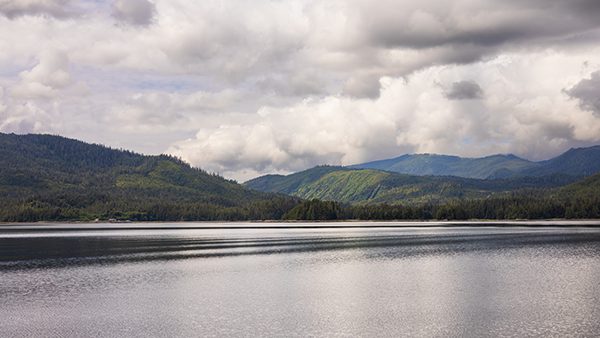
Timber
Ketchikan is in the middle of 17 million acres of the Tongass National Forests. Timber crews once logged spruce and white pine using high-lead yarding to spar trees.
The logs were swung to the beach by skyline or moved by Caterpillar tractors on rough roads built into the woods. Only 3% (636,000 acres) of the Tongass National Forest was available for timber harvest over one hundred years. Since passing the roadless initiative, logging has been shut down in the Tongass National Forest.
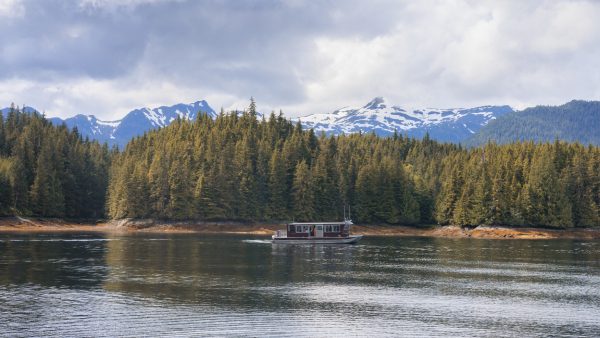
Crab Estuary
Our premier Dungeness Crab spawning ground is a tidal estuary home to many shorebirds, waterfowl, and larger mammals. The island once operated as a fox farm but became a log storage ground in 1944. With predominant features of grass and mud flats, in 1960, the tidelands were leased and operated as an oyster farm. This Eco-system provides a perfect haven for abundant wildlife and towering forests.
